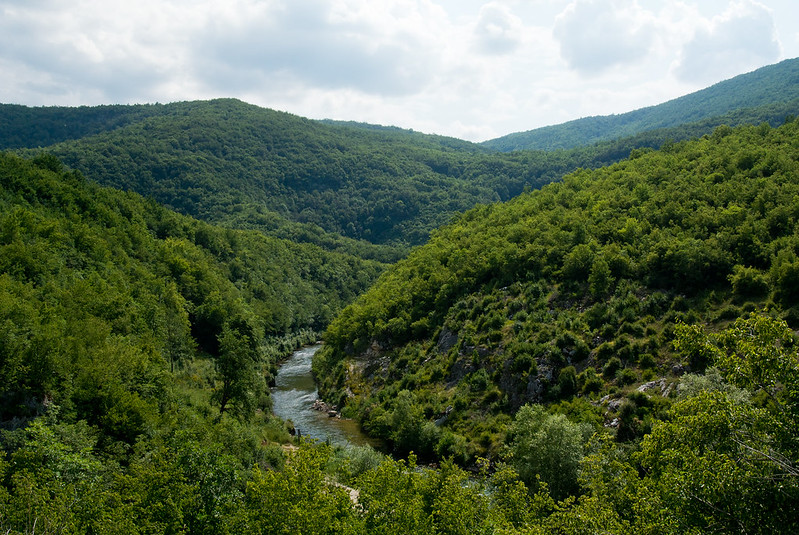
by Rosa Hergan
With two new coal power plants in the planning pipeline, soaring levels of sulphur dioxide and particulate matter (PM) emitted by the existing fleet of decrepit power plants, Bosnia and Herzegovina’s transition away from coal seems a distant prospect. Yet, citizen initiatives for a just transition are beginning to crop up at the local level.
In 2020, residents in the municipality of Sanski Most in the Federation of Bosnia and Herzegovina (FBiH) started to take action against the Zlauša open-cast mine, near Kamengrad. It is here that the federal government was planning to build a new power plant with Chinese support.
According to an investigation by Inforadar, after the previously state-owned mine went bankrupt in 2014, it was sold to one of BiH’s most profitable construction supply businesses, Lager d.o.o., in 2015 at a fraudulently low price. The Zlauša mine currently employs between 50 and 100 workers but operates only on days when the production is profitable according to Majda Ibraković, energy and climate change programme officer at Center for Environment (CZZS) in Banja Luka.
In 2018 and 2019, the company attempted to obtain permission for a new coal power plant, to be built by the China Energy Engineering Corporation Limited International Company, in the close vicinity of the Zlauša mine. The letter of intent provoked clear opposition by the residents of nearby villages and was rejected at the level of the city council on both occasions, while the mayor of Sanski Most has remained silent on the matter, neither rejecting nor supporting the project.
Overall, Kamengrad residents are doubtful about the economic feasibility of the mine, not to mention being aggrieved by the ongoing damage to the natural surroundings of the mine since 2017.
The river Bliha, adjacent to the coal mine, is a tributary of the Sana River and has been recurrently polluted by unregulated disposal of tailings along its riverbed, according to local citizens. Following the discovery of dead fish after last year’s heavy rains in September, residents turned to CZZS to prove the link between the polluted river and the mining activity.
In December 2020, CZZS sent a complaint to the local environmental inspectorate, which remains pending at the Federal Inspectorate of the Una Sana canton after having been passed on by several institutions. “We, at CZZS, are ready to take legal action against the inspector for failing to meet his duty,” says Ibraković.
Apart from challenging institutional inaction on environmental pollution, CZZS also launched a media campaign last year and organized several protests with Kamengrad residents to stop the mining activity in the municipality and start investing in solar energy instead.
Currently, CZZS is preparing the groundwork to create an informal coalition among members of the affected communities and other local stakeholders in the municipality of Sanski Most. Once this process is underway, the NGO intends to produce a position paper on just transition together with an external expert and multiple local stakeholders, including political representatives from the local government, city council and the canton of Una Sana.
“This case is very particular and any approach to a just energy transition has to meet the needs of this specific context,” Majda Ibraković said.
“One challenge which we will be facing during the implementation of our activities is getting accepted by the community and overcoming potential distrust due to not being from the region, nor the same canton,” she anticipates. Being aware of these obstacles, CZZS considers local ownership as key to any future project in Sanski Most.
Photo showing the Sana river by Flickr user Ivan Radic, published under a creative common licence.
